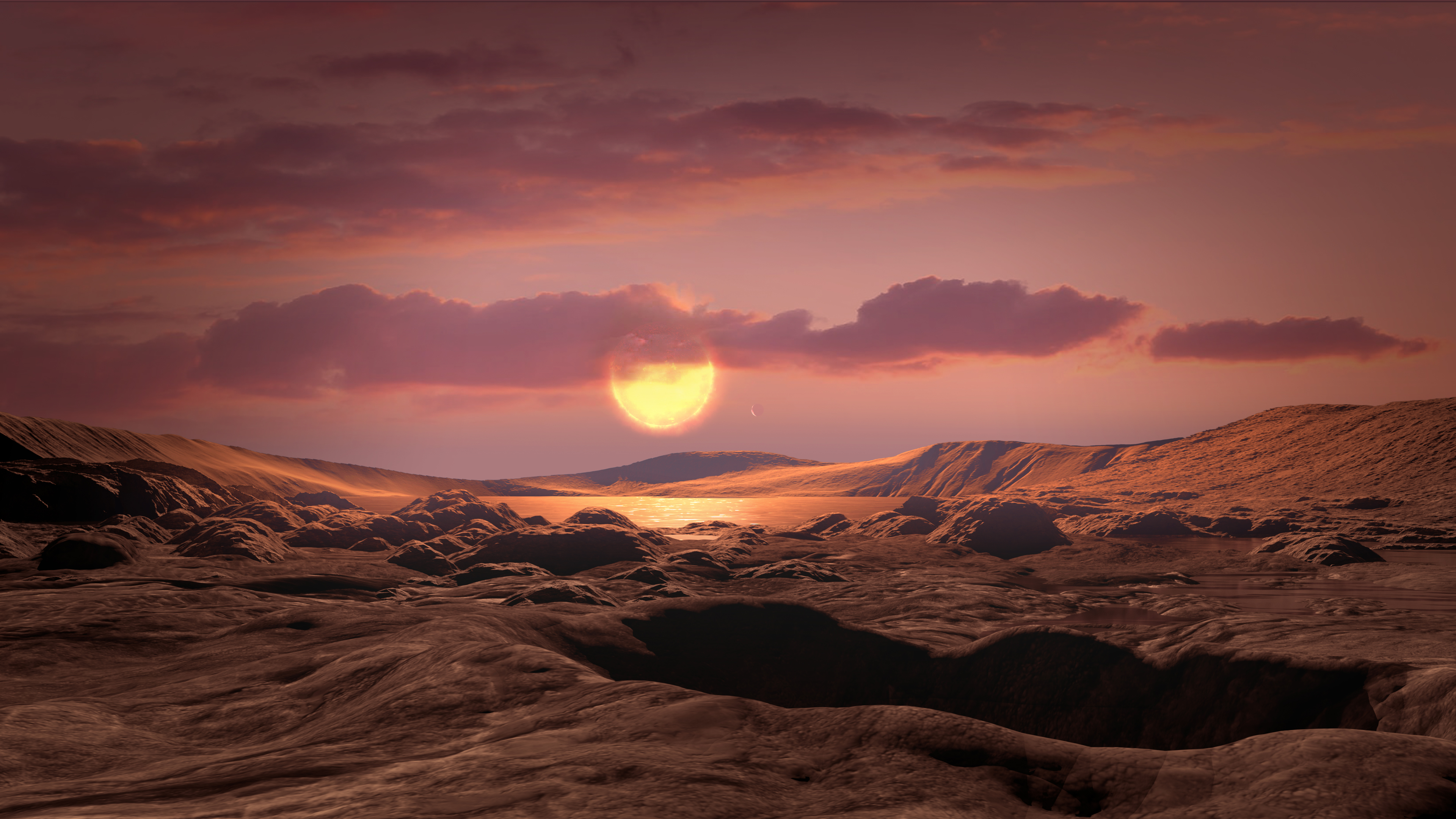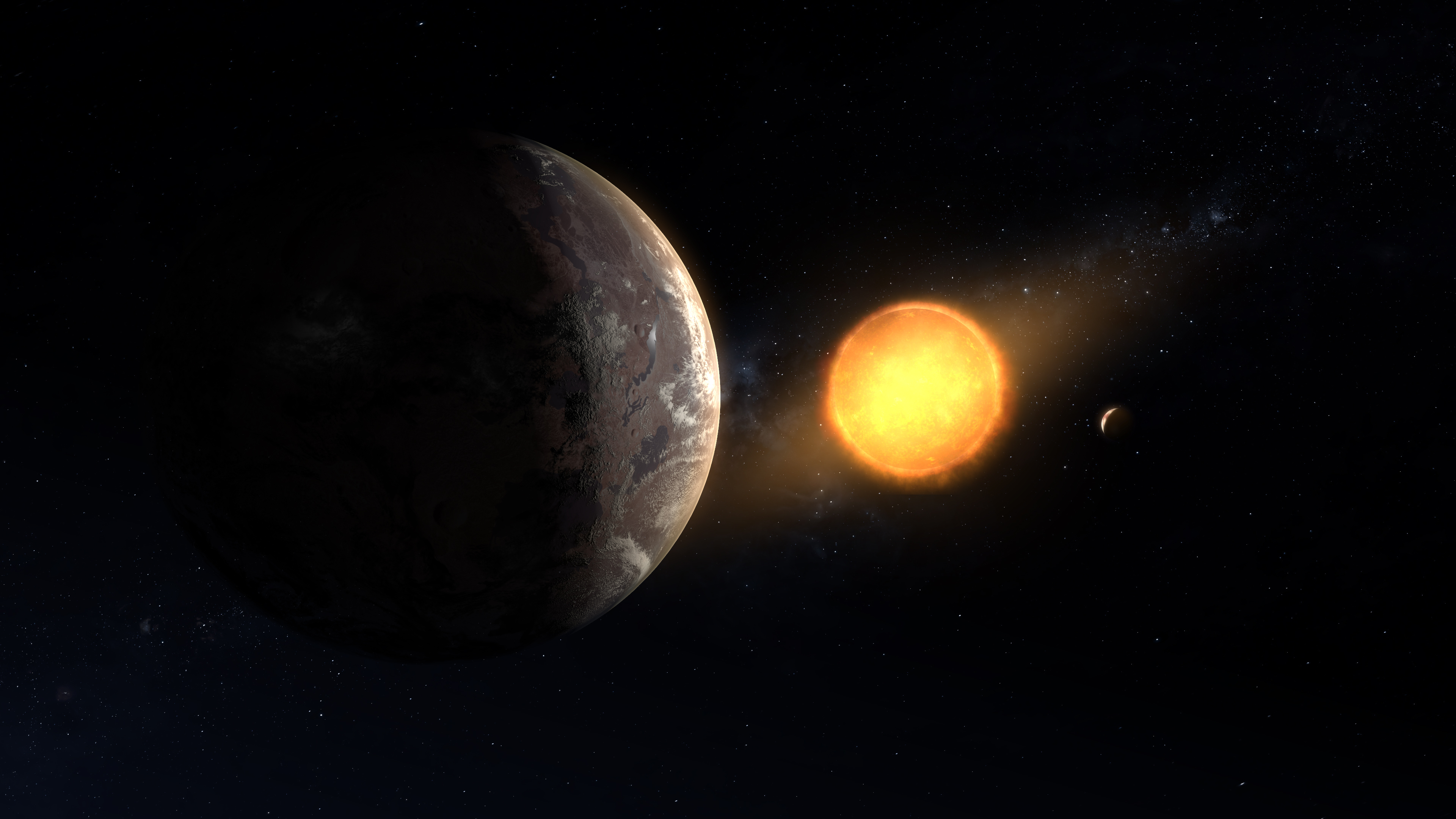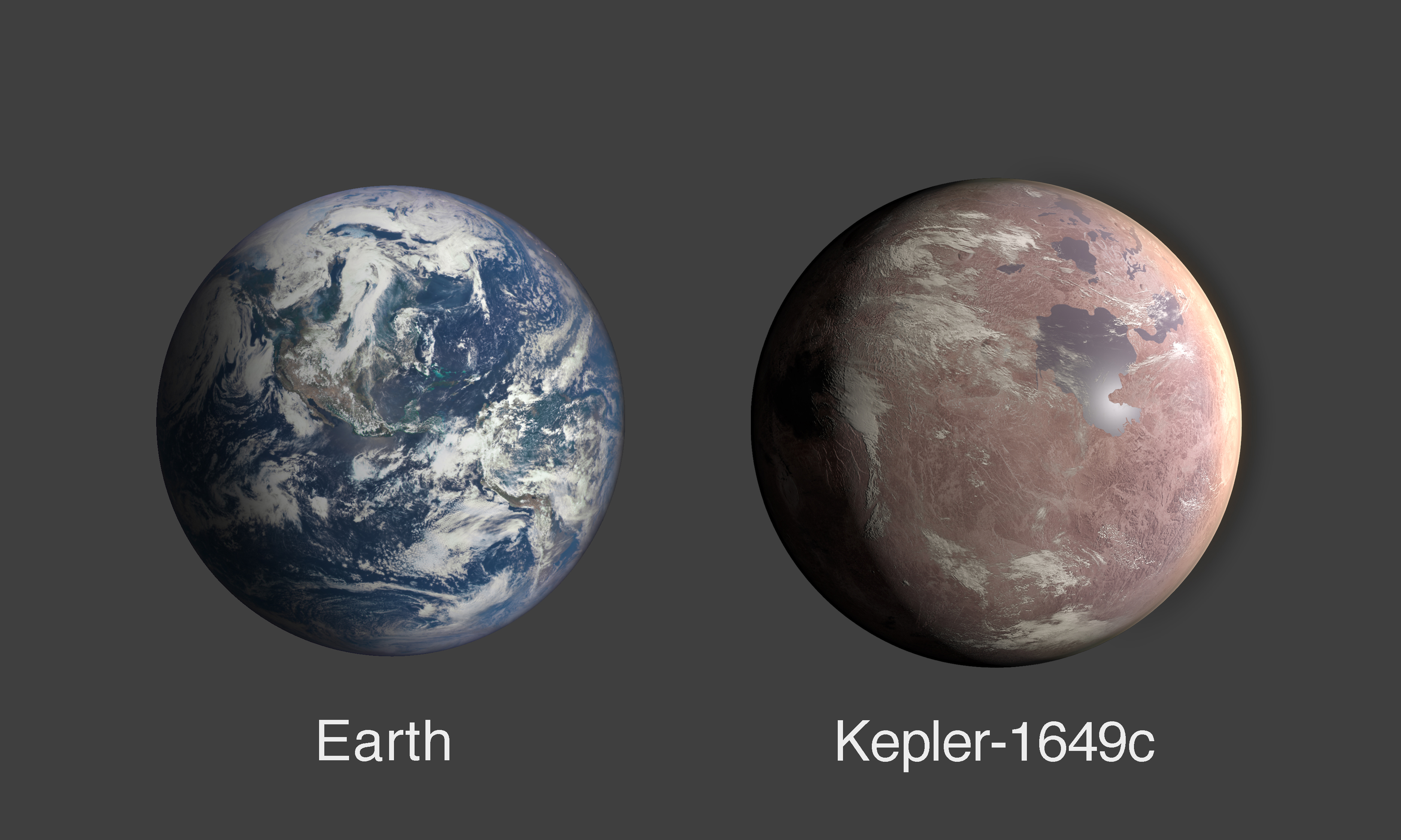Newfound alien planet may be most Earth-like yet
NASA's planet-hunting Kepler spacecraft may be dead, but its discoveries keep rolling in.
Scientists analyzing data gathered by Kepler, which NASA retired in November 2018, just found a hidden gem: an Earth-size world that may be capable of supporting life as we know it.
The exoplanet, Kepler-1649c, circles a red dwarf star that lies 300 light-years from Earth, a new study reports. Kepler-1649c completes one orbit every 19.5 Earth days, putting the alien planet in its host star's "habitable zone," the just-right range of distances where liquid water could exist on a world's surface. (Because red dwarfs are so dim, their habitable zones lie quite close.)
"This intriguing, distant world gives us even greater hope that a second Earth lies among the stars, waiting to be found," Thomas Zurbuchen, associate administrator of NASA's Science Mission Directorate, said in a statement.
Video: Habitable-zone planet found in 'reanalyzed' Kepler data
Related: Kepler's 7 greatest exoplanet discoveries
Kepler hunted for planets using the "transit method," monitoring stars for tiny brightness dips caused by planets crossing their faces from the spacecraft's perspective. Kepler did this in two phases: on its main mission, which lasted until 2013, and during an extended mission called K2, which wrapped up 17 months ago when the spacecraft ran out of fuel.
Both of these campaigns were very successful. Kepler spotted about two-thirds of the 4,100 confirmed exoplanets that astronomers have discovered to date. And the spacecraft's observations suggest that 20-25% of the 200 billion or so stars in the Milky Way galaxy host rocky worlds in the habitable zone. That's a lot of potentially life-supporting real estate.
Breaking space news, the latest updates on rocket launches, skywatching events and more!
Kepler's huge dataset will keep astronomers occupied for years. Some of this work involves double checking, trying to dig up bona fide planets that previous vetting software had mislabeled as false positives. And there are many false positives in the Kepler data, because lots of things other than orbiting planets can cause stellar brightness dips. (For example, many stars exist in binary systems, and Kepler commonly saw eclipses of one star by its binary companion.)
Indeed, a team of researchers formed the Kepler False Positive Working Group to do just such investigations. And they determined that Kepler-1649c had been wrongly thrown out as a false positive, reports the new study, which was published online today (April 15) in The Astrophysical Journal Letters.
Kepler-1649c is just 1.06 times the size of Earth and gets 75% of the stellar energy influx that our planet gets from the sun. This combination of characteristics makes the newfound world quite special indeed.
"There are other exoplanets estimated to be closer to Earth in size, such as TRAPPIST-1f and, by some calculations, Teegarden c," NASA officials wrote in the same statement. "Others may be closer to Earth in temperature, such as TRAPPIST-1d and TOI 700d. But there is no other exoplanet that is considered to be closer to Earth in both of these values that also lies in the habitable zone of its system."
Kepler-1649c has a neighboring planet, Kepler-1649b, which orbits the red dwarf at about half the distance and is thus probably too hot to support life as we know it.
And Kepler-1649c's true habitability prospects are tough to gauge. Astronomers know nothing about its atmosphere, for example, and the composition and thickness of a world's air are strongly tied to its temperature and ability to maintain surface water in the liquid phase. In addition, red dwarfs unleash powerful flares frequently, especially in their youth, so planets in their habitable zones may get their atmospheres stripped relatively quickly.
But red dwarfs are incredibly common, making up about 70% of the Milky Way's stellar population. So it's easy, and quite tempting, to imagine that conditions conducive to Earth-like life have cropped up on at least a few of their host worlds.
"The more data we get, the more signs we see pointing to the notion that potentially habitable and Earth-size exoplanets are common around these kinds of stars," study lead author Andrew Vanderburg, a researcher at the University of Texas at Austin, said in the same statement. "With red dwarfs almost everywhere around our galaxy, and these small, potentially habitable and rocky planets around them, the chance one of them isn't too different than our Earth looks a bit brighter."
- 7 ways to discover alien planets
- The strangest alien planets in pictures
- 10 exoplanets that could host alien life
Mike Wall is the author of "Out There" (Grand Central Publishing, 2018; illustrated by Karl Tate), a book about the search for alien life. Follow him on Twitter @michaeldwall. Follow us on Twitter @Spacedotcom or Facebook.
OFFER: Save 45% on 'All About Space' 'How it Works' and 'All About History'!
For a limited time, you can take out a digital subscription to any of our best-selling science magazines for just $2.38 per month, or 45% off the standard price for the first three months.

Michael Wall is a Senior Space Writer with Space.com and joined the team in 2010. He primarily covers exoplanets, spaceflight and military space, but has been known to dabble in the space art beat. His book about the search for alien life, "Out There," was published on Nov. 13, 2018. Before becoming a science writer, Michael worked as a herpetologist and wildlife biologist. He has a Ph.D. in evolutionary biology from the University of Sydney, Australia, a bachelor's degree from the University of Arizona, and a graduate certificate in science writing from the University of California, Santa Cruz. To find out what his latest project is, you can follow Michael on Twitter.




